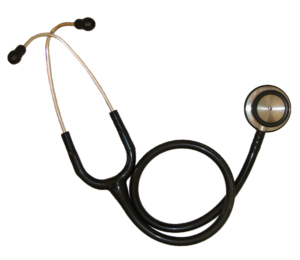Two studies that found a link with air pollution and health effects.The first found a narrowing of the carotid arteries (that bring blood to brain). This narrowing (stenosis) occurs prior to strokes. While this could be explained by other factors (for example, by especially poor diets or cigarette smoking), the link between high air pollution and heart attacks and strokes has been noted since the 1950s. From Medical Xpress:
Pollution levels linked to stroke-related narrowing of arteries
Air pollution has been linked to a dangerous narrowing of neck arteries that occurs prior to strokes, according to researchers at NYU Langone Medical Center. The scientists analyzed medical test records for more than 300,000 people living in New York, New Jersey or Connecticut. They found that people living in zip codes with the highest average levels of fine-particulate-matter pollution were significantly more likely to show signs of narrowing (stenosis) in their internal carotid arteries, compared to those living in zip codes with the lowest pollution levels.
Fine particulate matter pollutants, also called "PM 2.5 pollutants," are particulates with diameters less than 2.5 millionths of a meter. They are mostly by-products of combustion engines and burning wood. "We spend a lot of time thinking about traditional risk factors for stroke such as high blood pressure, cholesterol, diabetes and smoking—but our data underscore the possibility that everyday air pollution may also pose a significant stroke risk," said senior investigator Jeffrey S. Berger, MD, an assistant professor in NYU Langone Medical Center in the Department of Medicine, Leon H. Charney Division of Cardiology.
Medical researchers have noticed since the 1950s that episodes of high air pollution can bring temporary jumps in local heart attack and stroke cases. More recent studies have linked heart attack and stroke risks to long-term pollution exposures as well, including PM 2.5 exposures.
The two internal carotid arteries are situated on either side of the neck and provide most of the brain's blood supply. Strokes often result when accumulated plaque breaks off from a narrowed section of an internal carotid artery and blocks smaller vessels in the brain.
In the study, the carotid narrowing data came from vascular ultrasound tests performed on 307,444 tri-state area residents during 2003-2008 by Life Line Screening, a leading community-based health screening company focused on evaluating risk factors for vascular disease...The researchers' analysis showed that subjects in the top fourth of tri-state zip codes, ranked by average PM 2.5 levels, were about 24 percent more likely than those in the bottom quarter to have shown signs of stenosis—defined as a narrowing by at least half—in either internal carotid artery.
"Our study was a population study, so it can't establish cause and effect, but it certainly suggests the hypothesis that lowering pollution levels would reduce the incidence of carotid artery stenosis and stroke," says Dr. Newman. Scientists aren't yet sure how air pollution contributes to vascular disease. Studies have indicated that it may do so in part by causing adverse chemical changes to cholesterol in the blood, by promoting inflammation, and by making blood platelets more likely to form clots."
It has long been known that diesel exhaust has negative health effects. From Science Daily:
Researchers uncover a mechanism linking inhaled diesel pollution and respiratory distress
Researchers have, for the first time, shown how exhaust pollution from diesel engines is able to affect nerves within the lung...Diesel exhaust is a significant component of urban air pollution, containing a complicated mixture of gases and airborne particles. "Studies have shown that exposure to these diesel particles is associated with harmful health effects," says Mr. Robinson. "These particles are very small -- down to 20 nanometres in diameter -- and are therefore not only invisible to the naked eye, but can penetrate deep into the lungs.

 For years there has been discussion about curcumin's anti-inflammatory, anti-bacterial, and anti-cancer effects, but more research is needed (some trials are going on now). Curcumin is a chemical compound found in turmeric. Turmeric is a member of the ginger family. It is used as a spice and is a common ingredient in Indian cooking, but also used in Middle Eastern and South Asian recipes.From Medical Xpress;
For years there has been discussion about curcumin's anti-inflammatory, anti-bacterial, and anti-cancer effects, but more research is needed (some trials are going on now). Curcumin is a chemical compound found in turmeric. Turmeric is a member of the ginger family. It is used as a spice and is a common ingredient in Indian cooking, but also used in Middle Eastern and South Asian recipes.From Medical Xpress; A lengthy review of
A lengthy review of  What was really interesting in the
What was really interesting in the  Research is accumulating that the microbial exposure from a vaginal birth, breastfeeding, and pets in the first year of life are all good for a baby's developing immune system and the gut microbiome.
Research is accumulating that the microbial exposure from a vaginal birth, breastfeeding, and pets in the first year of life are all good for a baby's developing immune system and the gut microbiome.